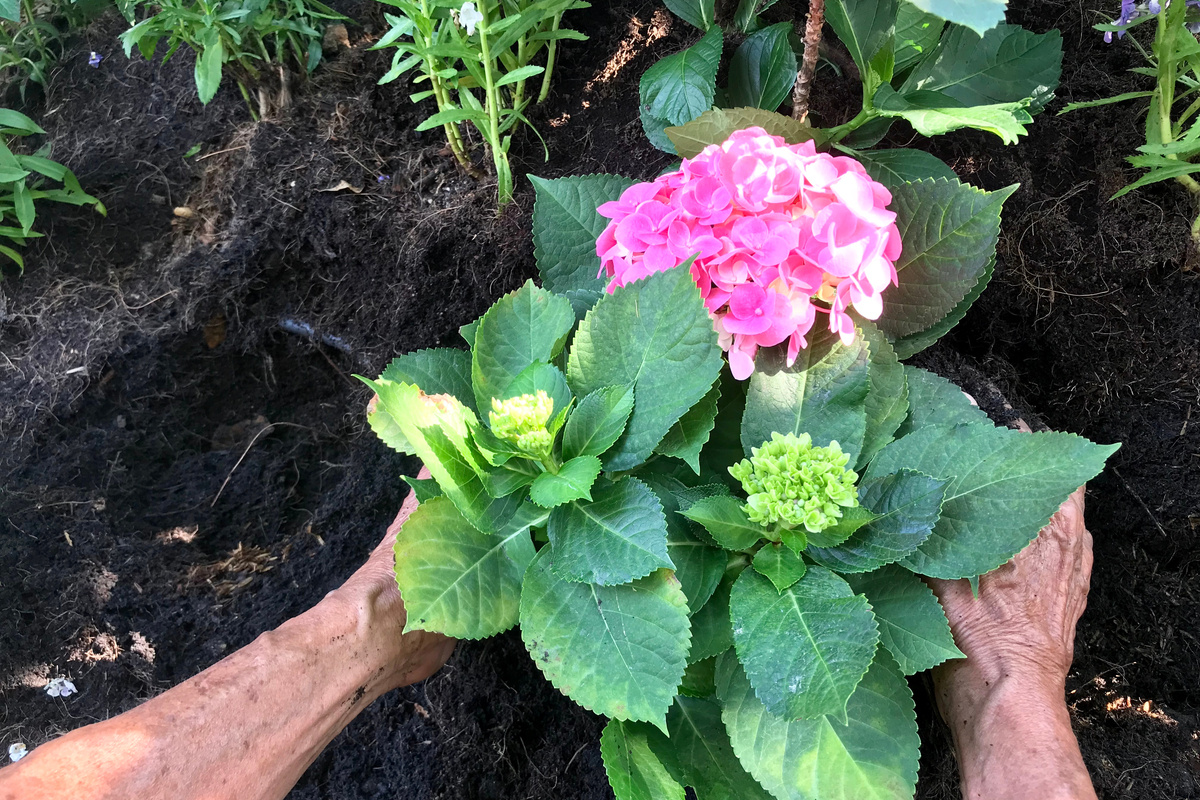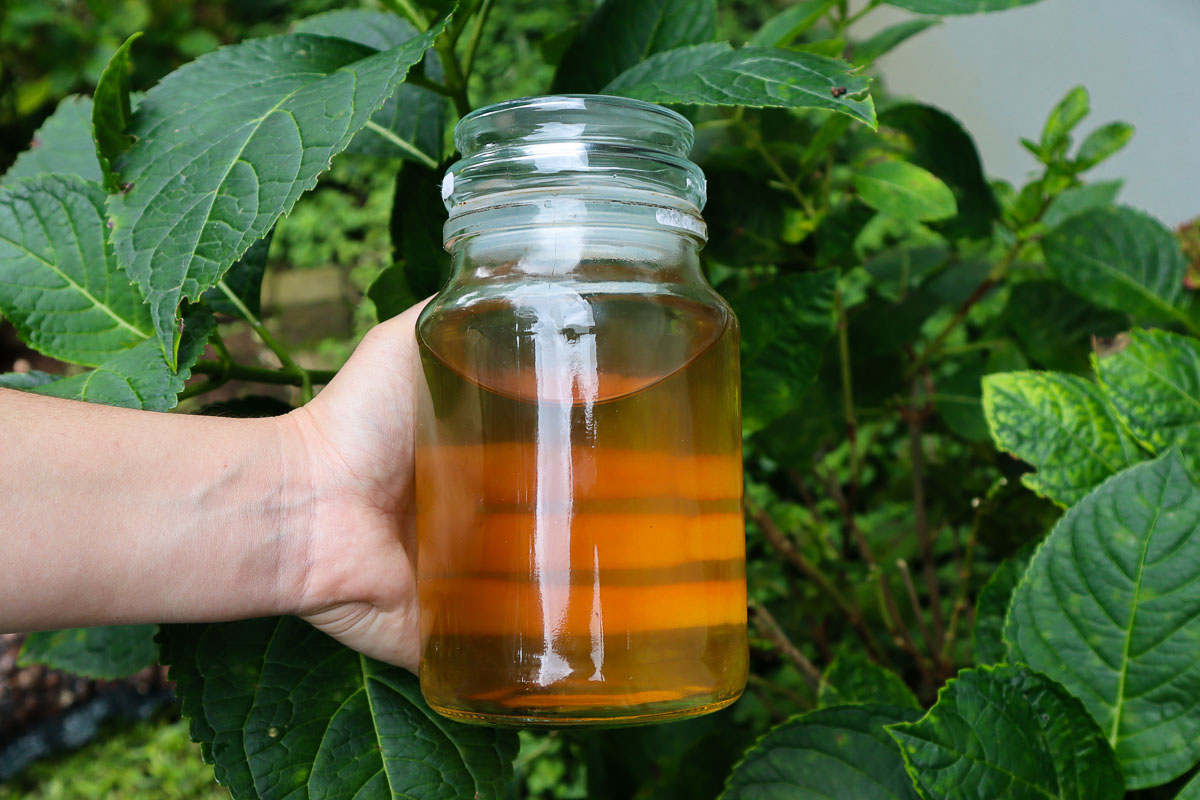
Hydrangeas are grown for their big luscious leaves, their usefulness in growing in shady areas and mostly, for their big mophead blooms.
Getting bigger and better blooms is the ultimate bonus, easy to accomplish with the right conditions and a little fertilizer.
As a general rule, hydrangeas grow best when fed with a slow-release fertilizer twice a year in spring and early fall. This is for general maintenance, not necessarily to get bigger blooms.
Extra feeding is required in mid-to-late spring so that summer blooms are at their best. The frequency of feeding will be determined by the choice of fertilizer you use.
Fertilizer Choices
Chemical fertilizers vs Organic fertilizers
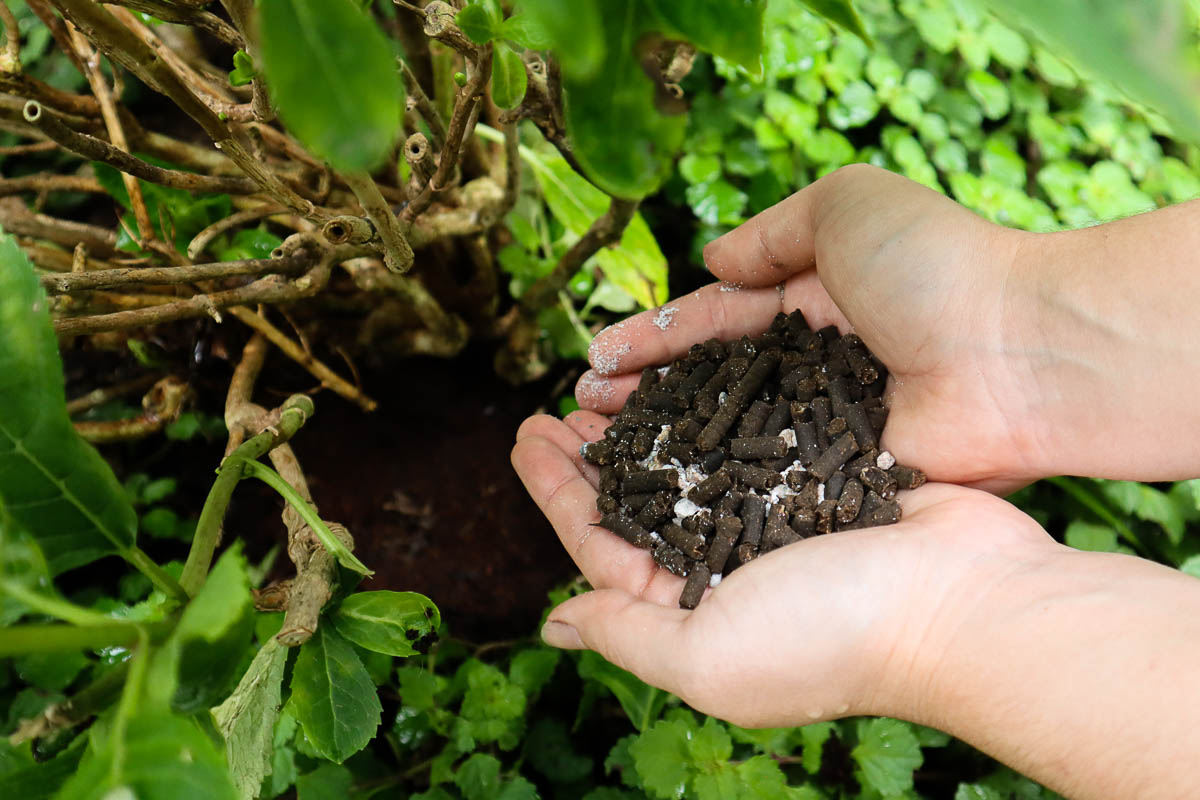
Synthetic fertilizers, although derived from natural minerals, are often manipulated to make the concentrations required for good plant growth at a fast pace. Prepared in a lab, these formulations are made specifically for the plant’s benefit and not normally to improve the soil structure.
Organic fertilizers are based on the natural degradation of living organisms like plants and animal manures. In manufactured organic fertilizers, the products are also be manipulated by composting, sterilizing, milling and blending so that the final product is easy to use.
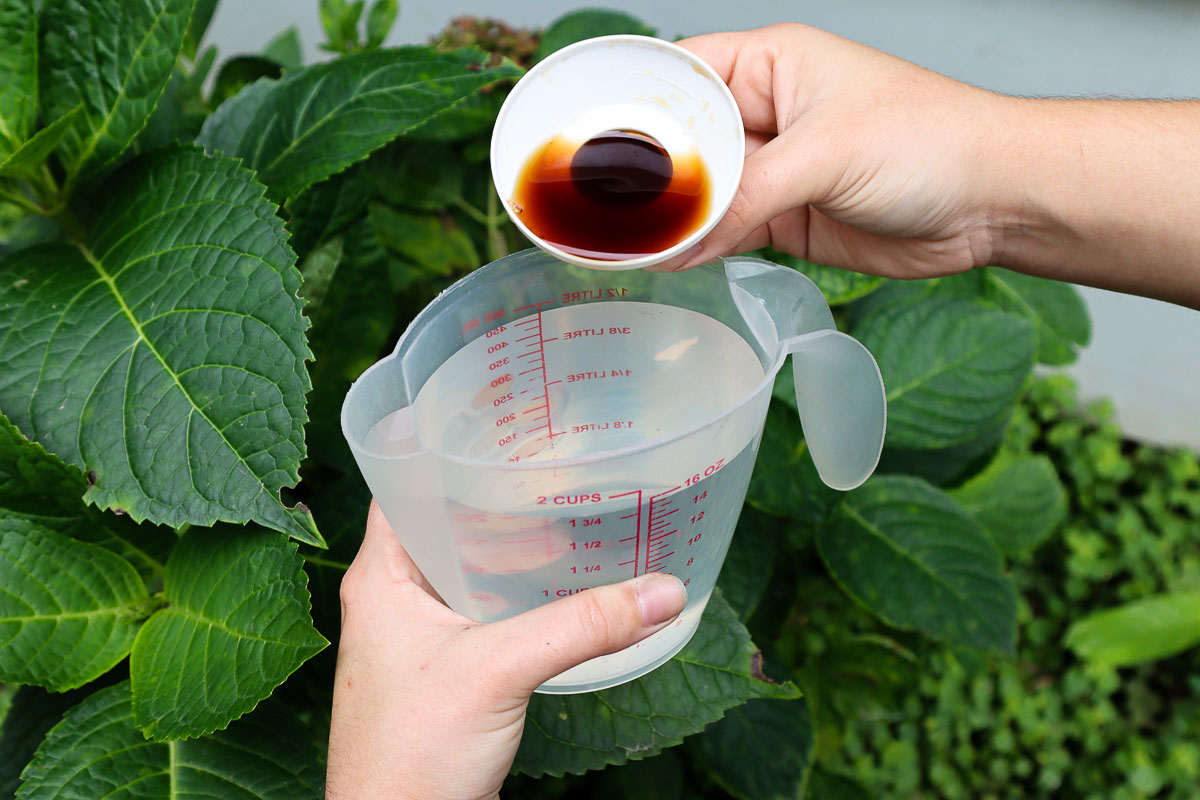
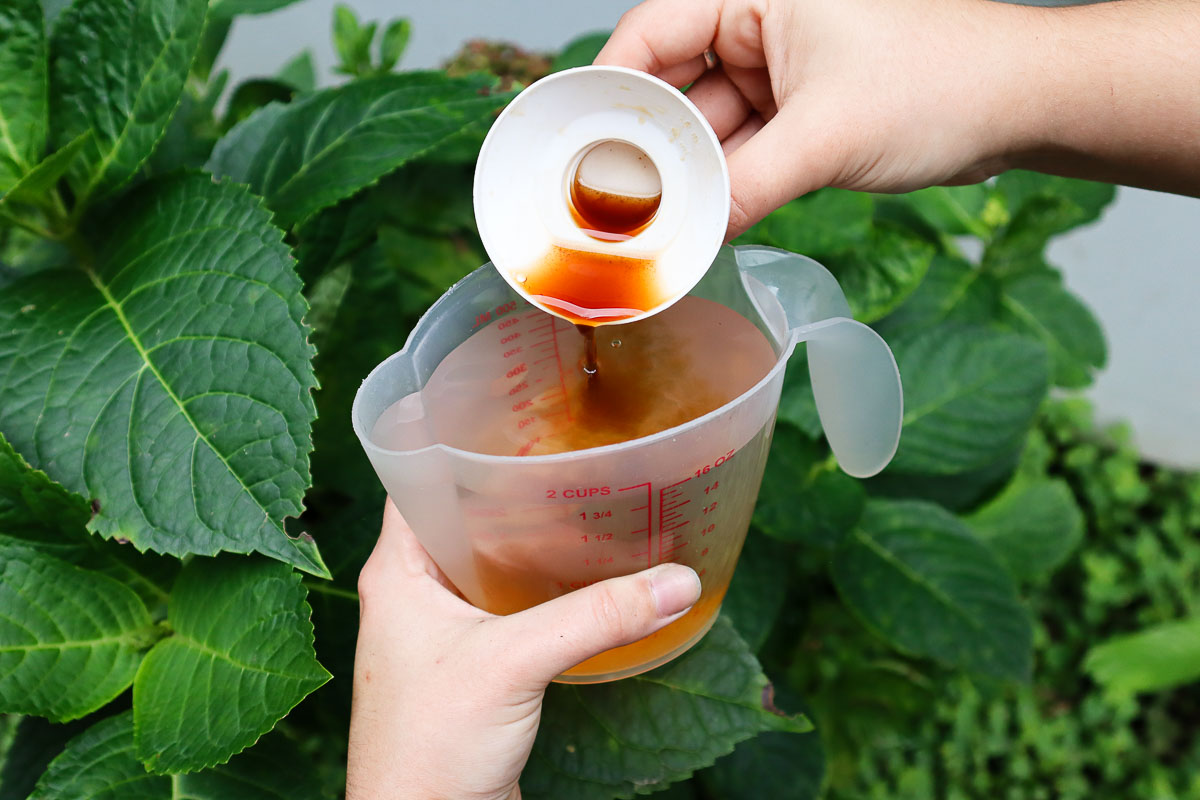
This carbon-based product is released to the soil through microbes which makes it more of a soil conditioner than a plant food, but nevertheless has an effect on the growth of plants. Organic fertilizers are not as concentrated as chemical formulations, but are good for general garden health.
Specialized flower fertilizers
There are products on the market specifically formulated for flowering plants like azaleas, rhododendrons, camellias, gardenias, and hydrangeas. These are the best ones to choose for bigger and better blooms.
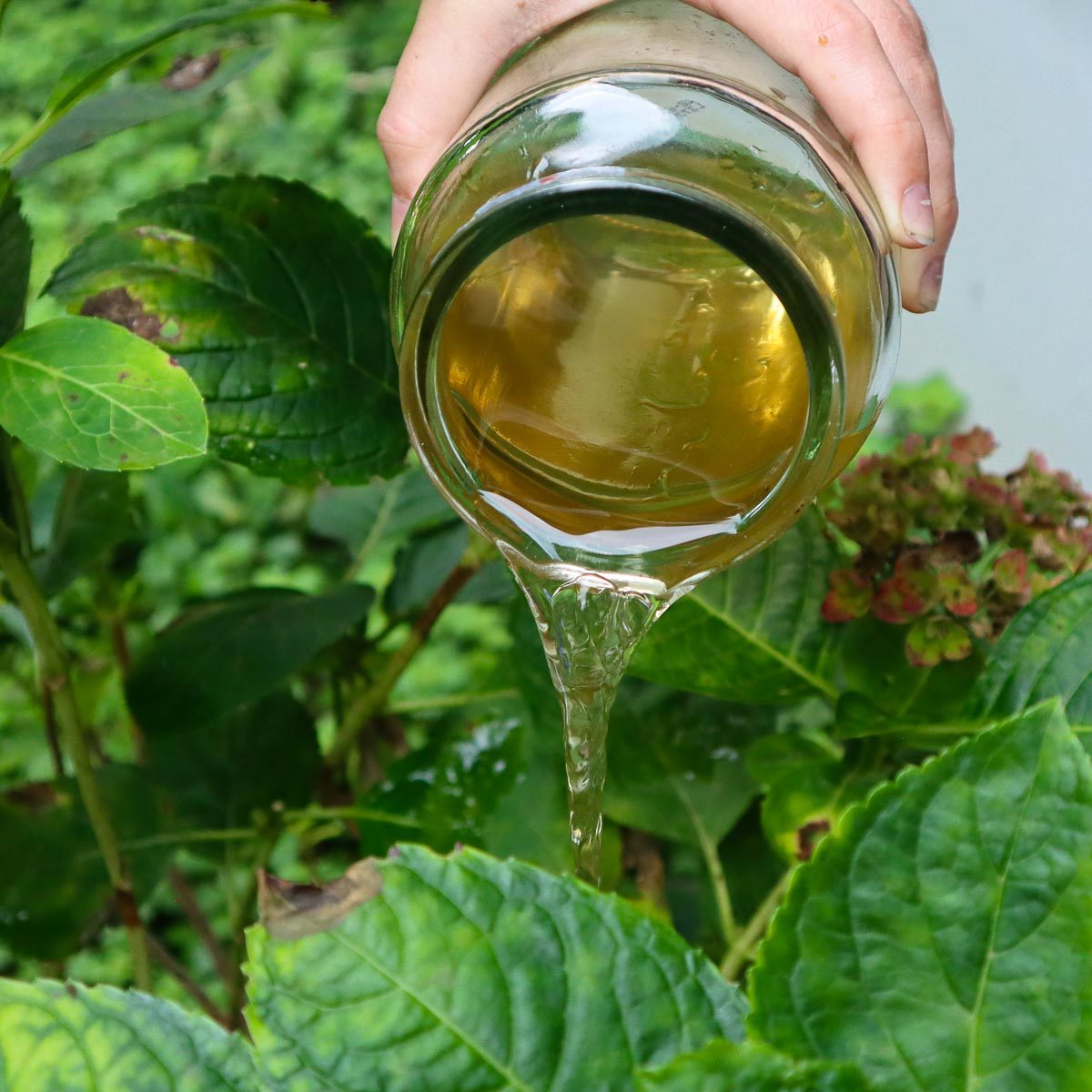
The ratio of nutrients for these products is typically around 1 part nitrogen (N), 3 parts phosphorous (P) and 2 parts potassium (K). This formula is designed to produce bigger and more colorful blooms. Dissolved in water, it is typically used as a foliar and soil feed to get to the roots, applied every 7-14 days (depending on the product).
These fertilizers are generally used when buds are setting to increase the number of buds and the size of the flowers. Buds set on old wood from mid-summer and into fall. Boosting feeding during this time will help with blooms the following season.
This fertilizer from Jacks Classic is the perfect ratio to apply to your budding hydrangea plants. See the price on Amazon here.
NPK Numbers
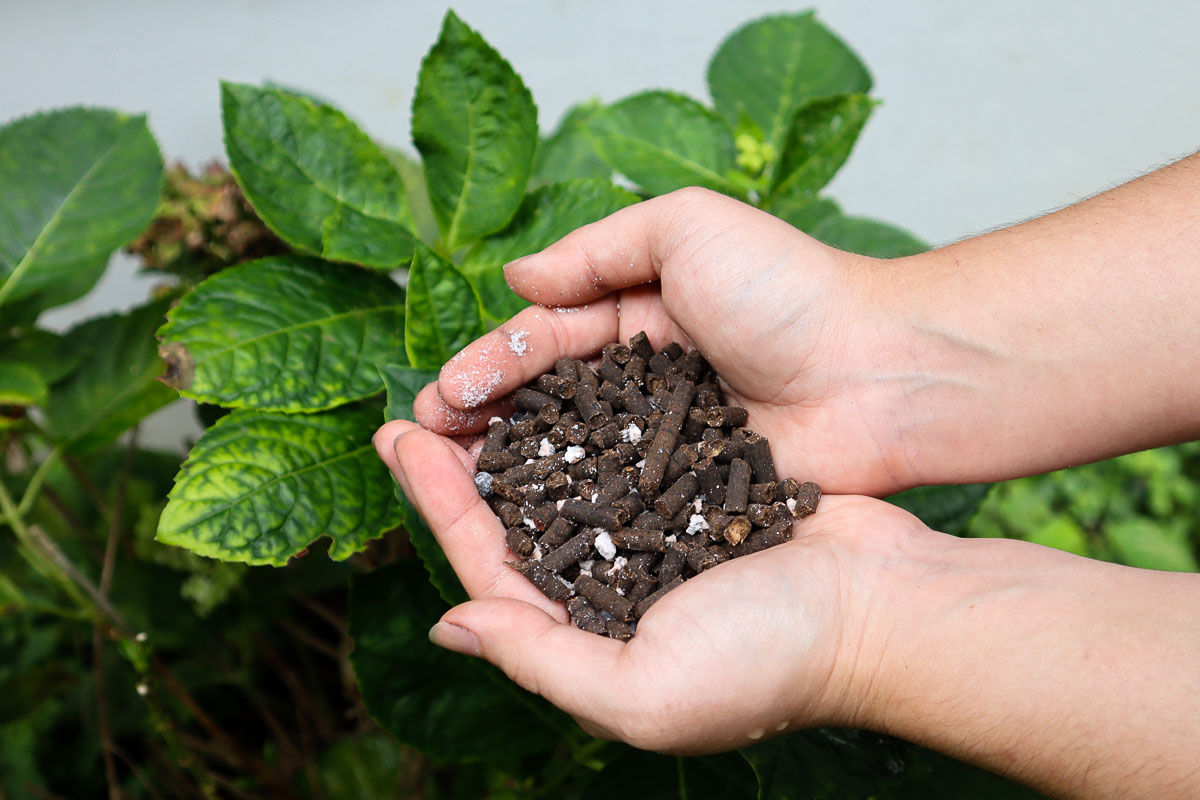
A balanced fertilizer contains equal parts nitrogen, phosphorous and potassium. It also includes a range of trace elements, known as micronutrients, that plants require in smaller amounts. These include elements like boron, iron, manganese, zinc and others.
For bigger and better blooms, more phosphorus is essential in the NPK ratio. For example, 10-20-10 has twice the amount of phosphorous as nitrogen and potassium.
The other ingredients, also used in a lower concentration, also have a job to do. Nitrogen is essential for leaf growth and potassium makes stems and roots strong and moves nutrients through the plants. Without these, the nutrient cycle in the plant will break down.
Hydrangea Types & Their Specific Requirements
There are around 75 species of hydrangeas in the world, but only six of them are commonly cultivated in home gardens. Each also has a slightly different fertilizer requirement, so make sure you know your species before you get started.
Hydrangea macrophylla
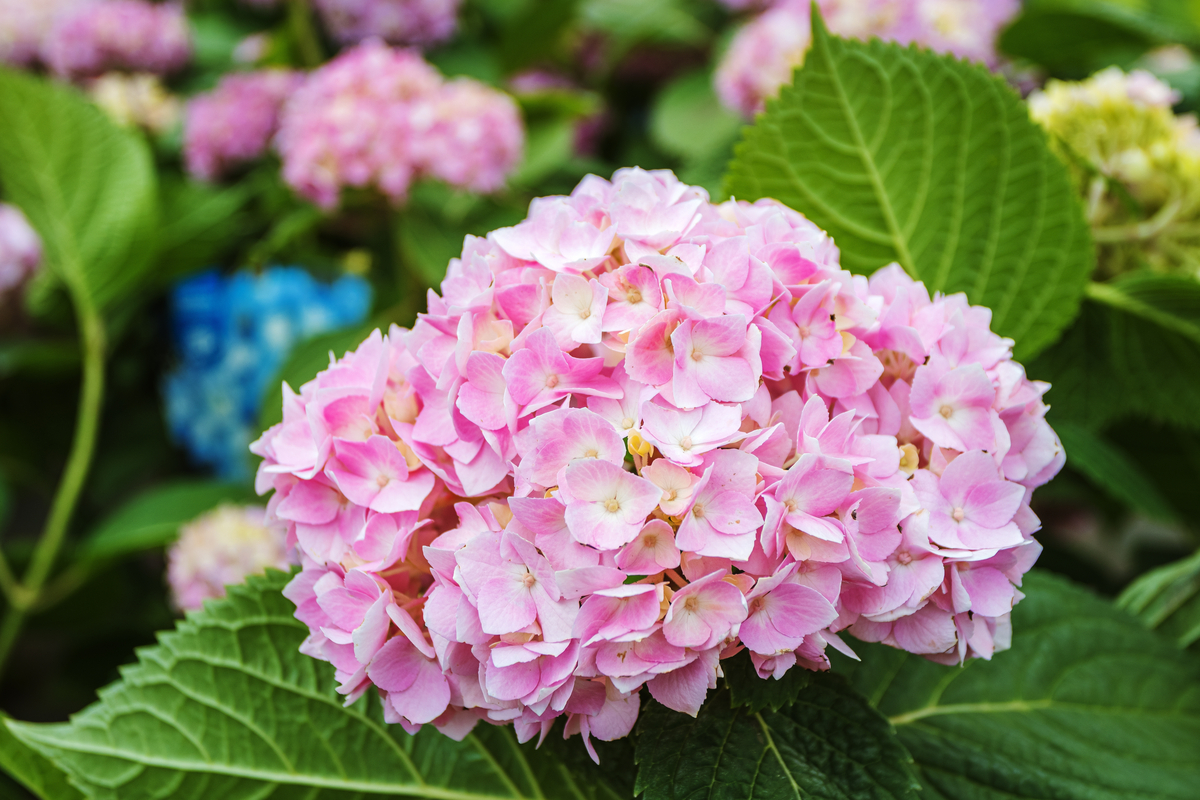
Also called Bigleaf Hydrangea, this variety has over 600 named cultivars and is by far the most popular species. These plants bloom in late spring and early summer, potentially reblooming in later summer. The flowers are generally blue, pink or white but can also be red and purple.
Soil pH is a good indicator of what color flowers will be produced. Flowers will be naturally pink, but if aluminum is in the soil and the pH is 5.5 or below, the flowers will turn blue. There are blue hydrangea products that will help increase the acidity in the soil and increase aluminum or sulfur. A mulch of pine bark or peat will also do the trick.
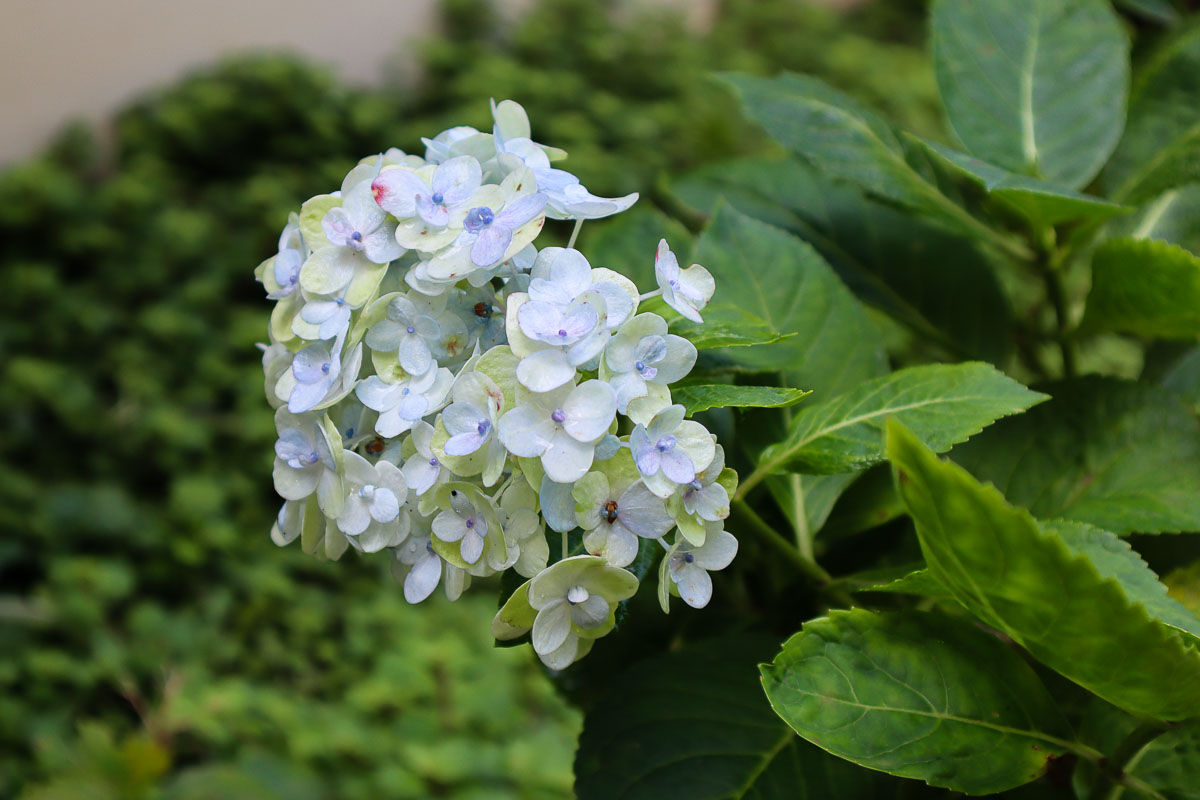
Hydrangeas grown in soil with a pH of between 5.5 and 6.5 may be purple, pink, blue, or a combination of all these colors. To keep more pink flowers, try adding lime to the soil. White-flowering hydrangeas usually remain white in any soil.
These hungry plants should be fed every 6 weeks with a balanced fertilizer from early spring until growth slows in the late fall. Depending on the color of the blooms you want, choose a formula higher in phosphorous to keep the pink and enhance the color.
If you prefer blue, use a low phosphorous and high potassium formula that can help intensify the blue color. Alternatively, use a specialized hydrangea food as directed. Generally, for the best blooms, a consistent feeding regime is best.
Hydrangea arborescens
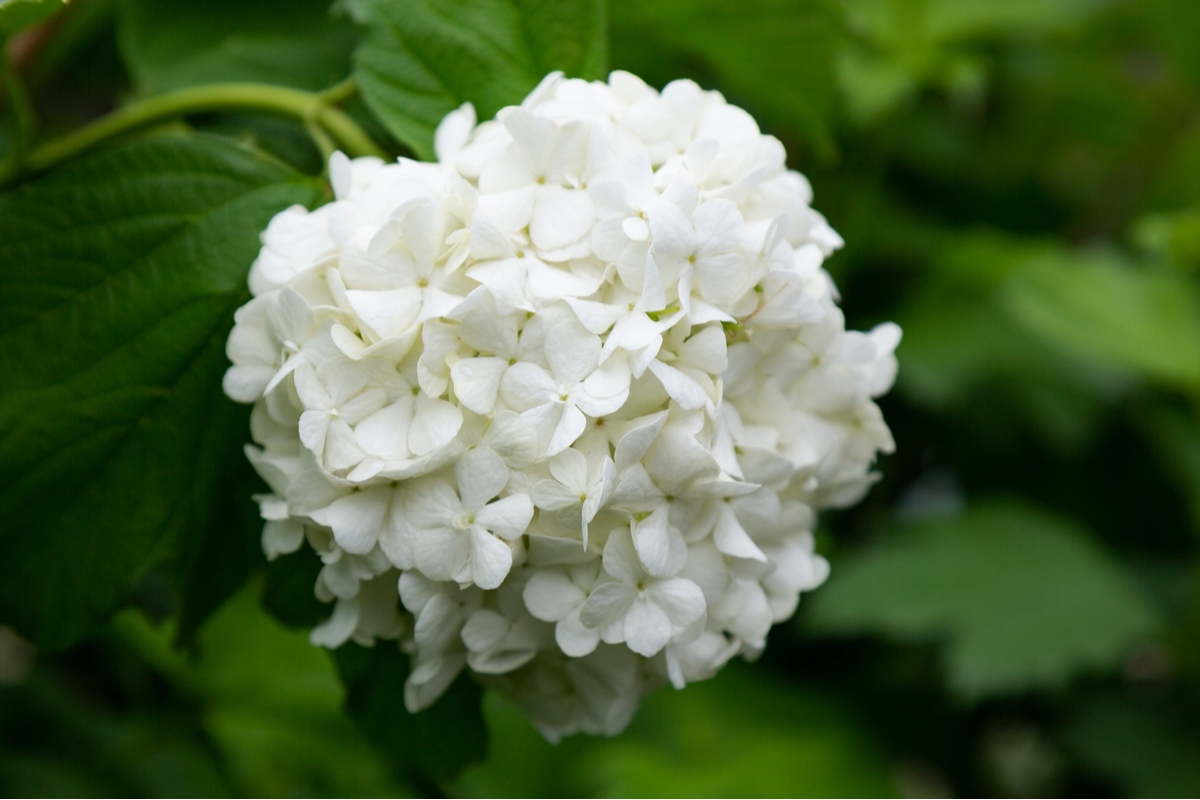
This plant is also called Wild Hydrangea or Smooth Hydrangea, originating from the Eastern United States. These plants should be grown in at least 4-6 hours of sunlight and although they can take a bit of shade, their blooms will be better with more sun.
There are pink varieties of this plant, but by far the most popular are the white-flowering cultivars such as ‘Annabelle’ and ‘Invincibelle’. This species needs feeding in spring with a formula like 15:30:15 which has double the phosphorous to encourage big and bright blooms.
Hydrangea paniculata
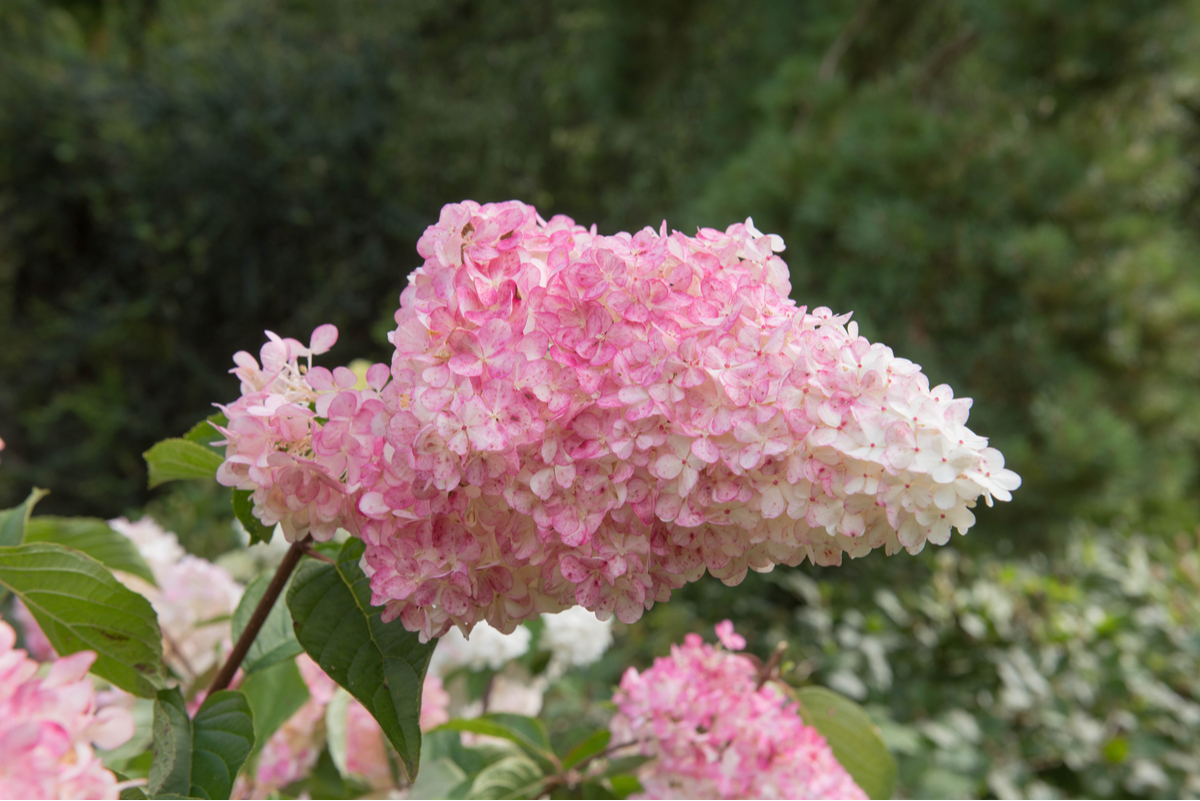
Also known as Panicle Hydrangea, this hydrangea has conical-shaped flowers and is more cold-tolerant than other types. It’s the easiest hydrangea to look after. In fact, it prefers not to be fed too much as this may produce weaker stems.
Feeding with a balanced 10:10:10 ratio NPK in spring will be enough to get the best flowers. Make sure the plants are positioned in an area that gets 6 hours of sun a day and shade in the hottest climates in the afternoons. The flowers are usually white but can also be a mix of pink and red tones as they get older.
Hydrangea quercifolia
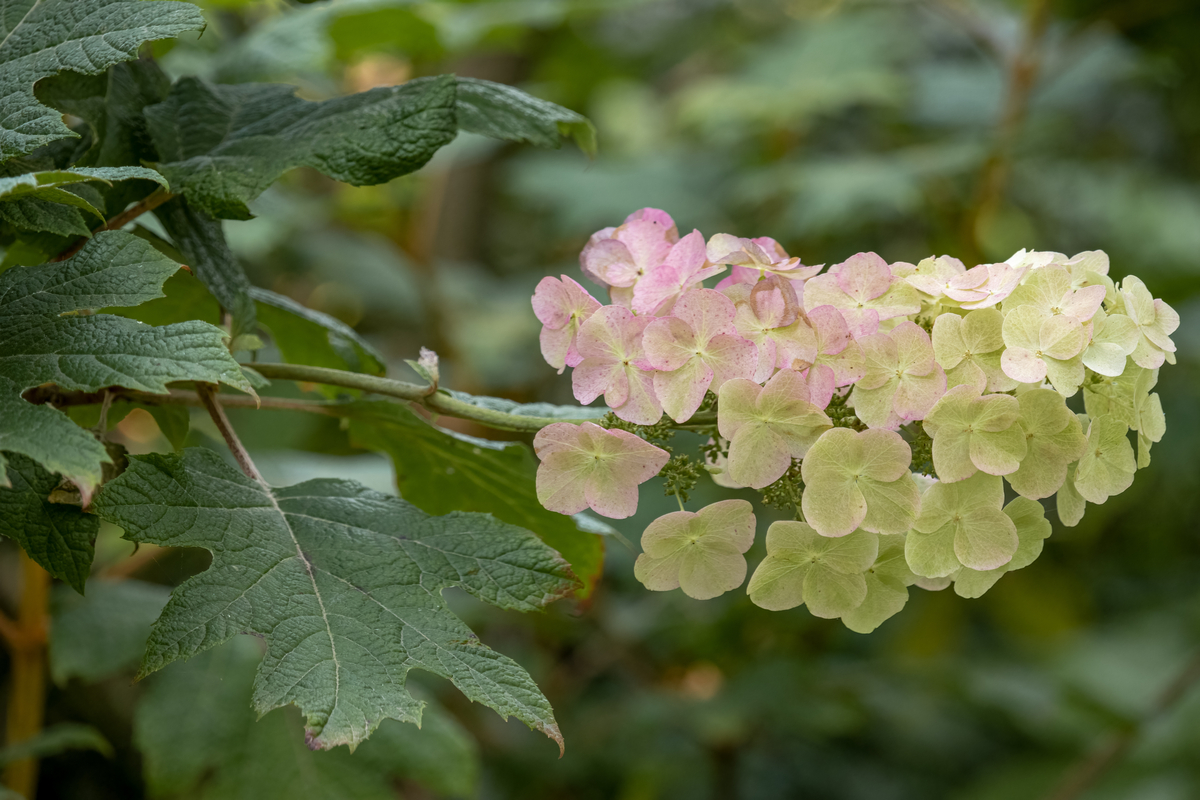
This is the Oakleaf Hydrangea, named for its oak-leaf-shaped leaves. It originates in the southeastern USA and grows in zones 5-9. This covers a good range, excluding only the coldest northern regions and the hottest southern regions.
This large shrub will benefit from a fertilizer high in phosphorous, such as 15:30:15. Apply in spring to encourage better blooms.
The flowers are cone-shaped and bloom from mid-spring to mid-summer. These white flowers turn shades of pink, purple, red and orange as the season continues. They prefer some sun to perform well, but will also do better with a little shade in hotter climates.
Hydrangea anomala subsp. petiolaris
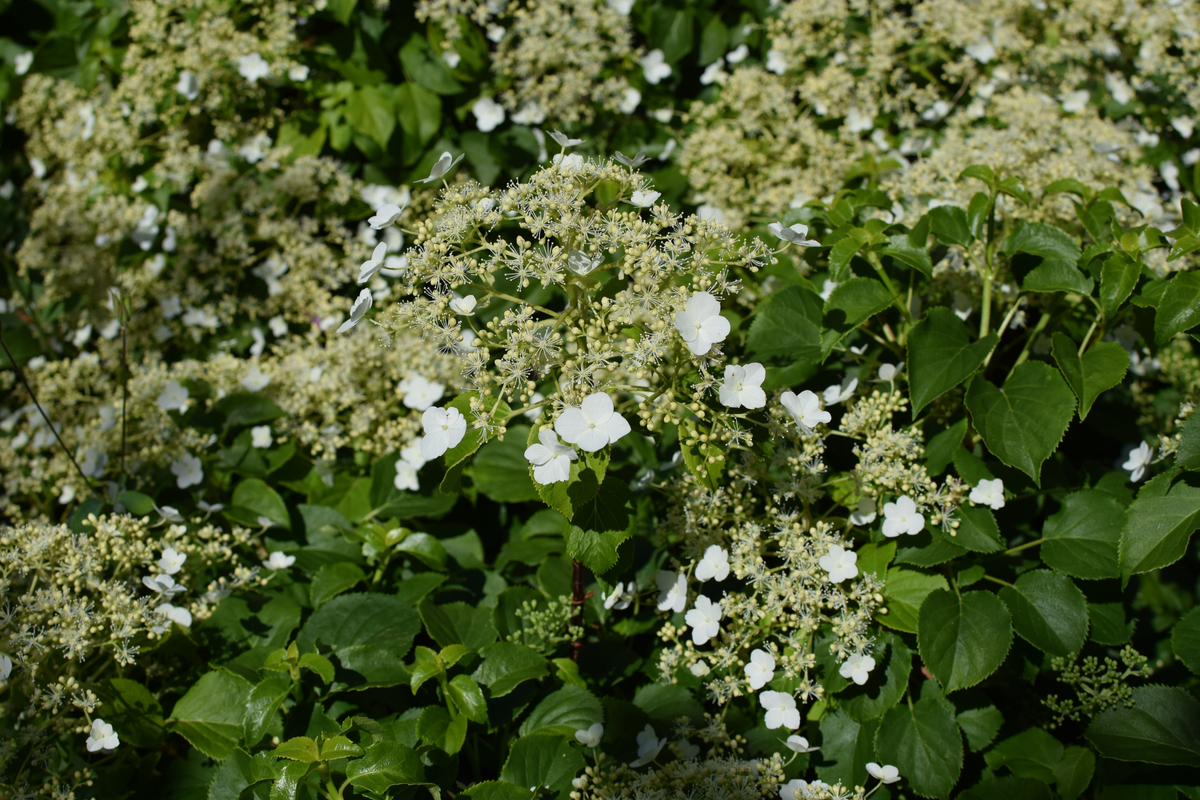
The Climbing Hydrangea is one of the few vine types around. This type of hydrangea can climb 30-80 feet and 3-5 feet wide. Grown in sun or shade, it is quite hardy, planted in zones 4-8. The Climbing Hydrangea blooms in spring and summer, producing white flowers with shades of cream and yellow.
Feed climbing hydrangeas a few times in the growing season. In spring and again in early summer, use a balanced 10:10:10 fertilizer for good growth and blooms.
Hydrangea serrata
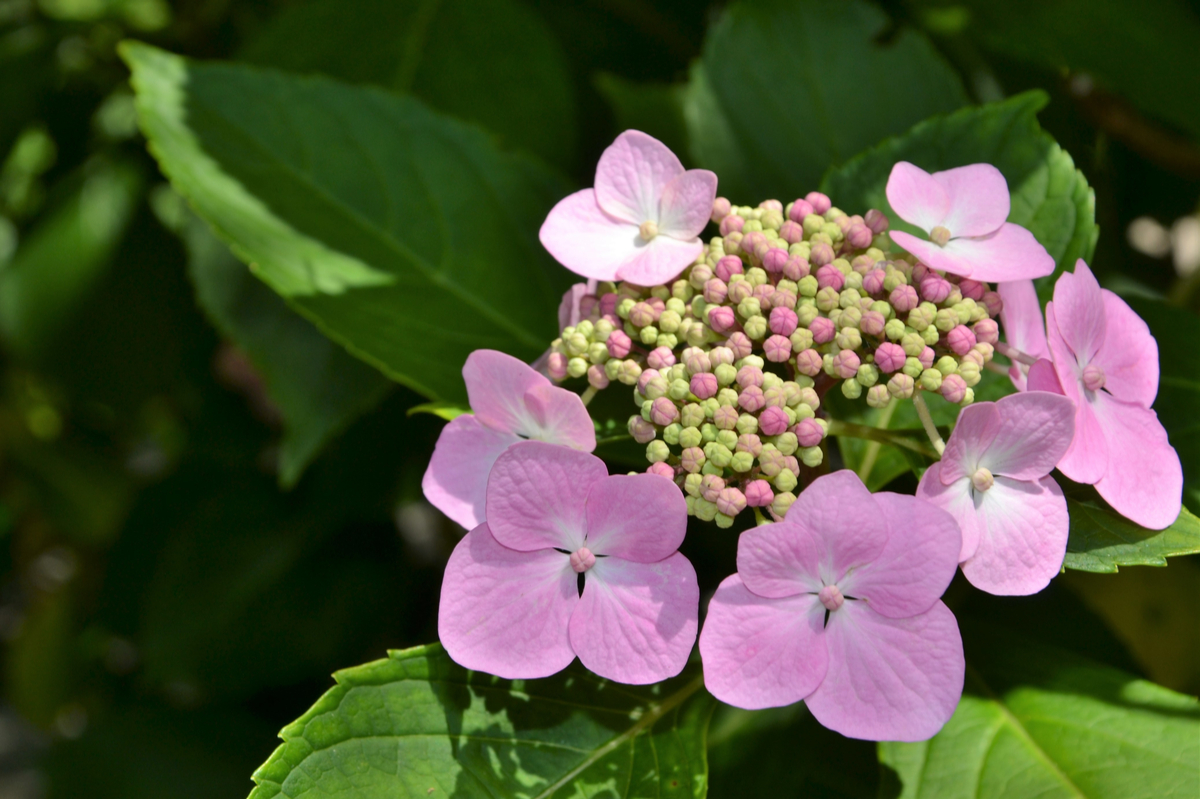
The Mountain Hydrangea, hailing from Japan and Korea, prefers the warmer weather and is susceptible to cold damage. Like Hydrangea macrophylla, the colors of the flowers will depend on the soil composition. The blooms will be pinker in alkaline soils and bluer in acidic soils. They can also be shades in-between and even white.
Use a slow-release fertilizer high in phosphorous like 15:30:15 in spring to make sure you get the best blooms in late spring and summer.
Things To Consider
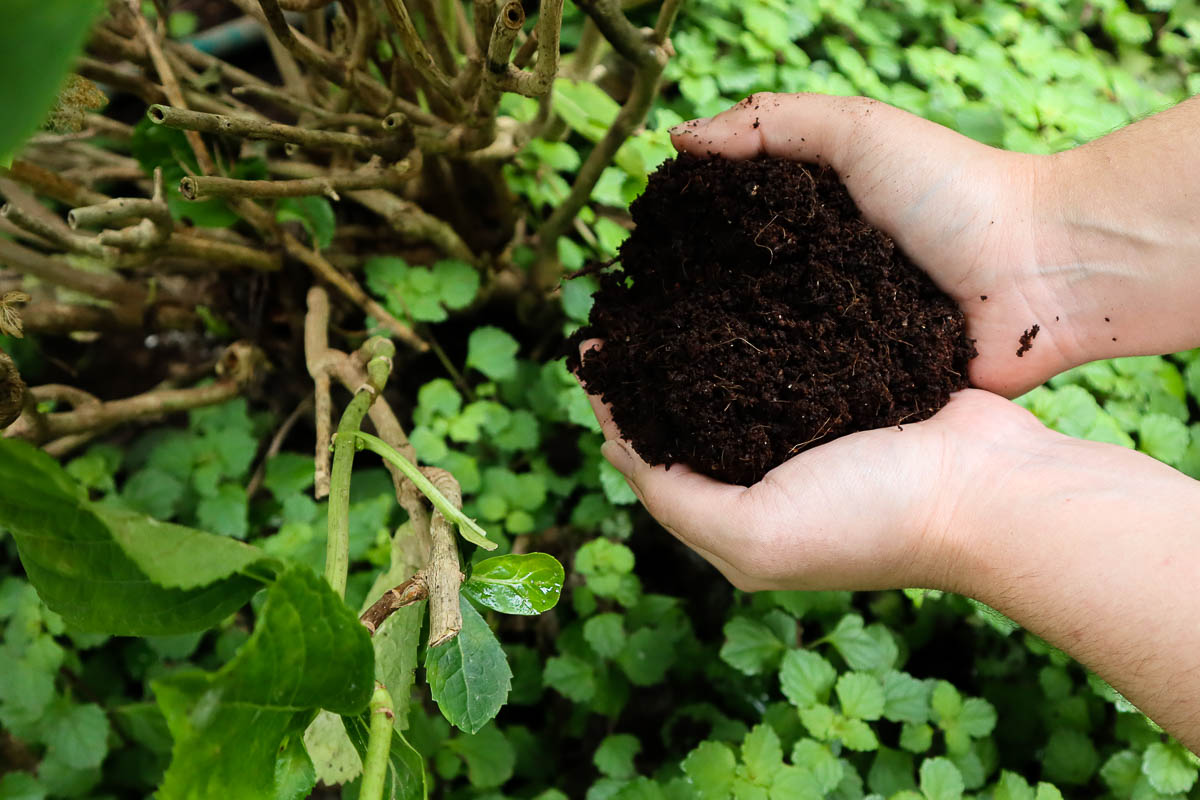
Fertilizer is not the only thing that guarantees strong blooms. These conditions are also essential to strong flowering:
- Choose the correct cultivar for your climate.
- Prepare the soil well before planting with the proper nutrients.
- Keep the soil moist but well-draining.
- Choose the correct position in the garden for the chosen variety, making sure they get enough sun and enough shade for their needs.
On top of this, keep up with maintenance like proper pruning and watering – all essential to get the most out of your plants.

